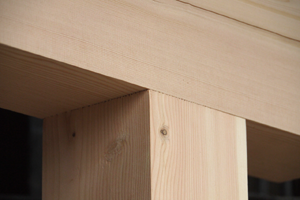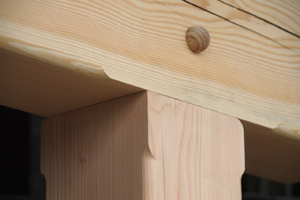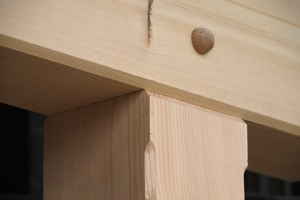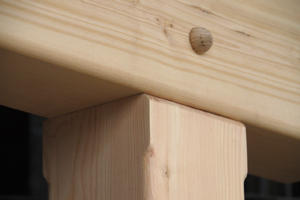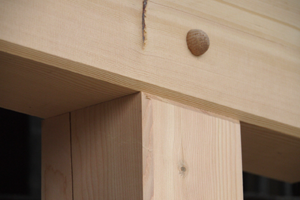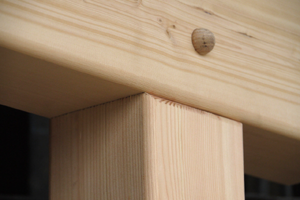Why chamfer?
From Daizen News Jun 2012
Timber at true square has a very sharp corner edge. For better safety in handling and in daily life, we take the edge off. There are also reports that fires start and catch more slowly with a chamfered edge compared to a square, sharp edge. And chamfering is a nice wood detail for emphasis, almost like the details on a Greek column.
This timber has no chamfer on it. You can see how sharp it is (and uncomfortable to bump against).
Here are the possibilities for chamfering. In any style, the size of the chamfer is always variable, based on customer preference. By default, we keep the size within a conservative range—a chamfer of about ¼ in.
Daizen offers two different edge profiles—45° and round. There are three styles for each edge profile:
Ski stop.
45° edge ski stop.
round edge ski stop.
This chamfer stops before the joint. This is the most typical style in timber framing because it frames the post and beam joint area nicely.
Ski stop with joinery enhanced.
45° edge enhanced joinery, with reveal.
round edge enhanced joinery, with reveal.
This chamfer style exposes the joint more noticeably with a small reveal, and it still contains the ski stop finish.
Through.
45° edge through chamfer.
round edge through chamfer.
This chamfer style could occur at any edge (with a few exceptions like the bottom of the beam where a post would meet it, as for window and door openings).
At complex joinery points such as a scarf joint, we recommend chamfering the joinery edge to enhance the look of the joinery. If the joint is not chamfered, and we achieve a nice, tight fit, the joint becomes very flat (both less dramatic and less visible). A chamfer here gives depth at the joint that enhances the look of the wood joinery.
Imagine this hip rafter focal point without through chamfering.
Interested in finding out more?
At Daizen, we ensure client expectations and understanding of processes are met through all phases of our work, from structural design and engineering to fabrication of timber frames and assembly and installation.
